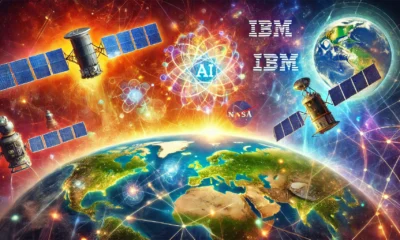Artificial Intelligence
Data Science Companies Use AI To Protect Environment And Fight Climate Change

As the nations of Earth attempt to invent and implement solutions to the growing threat of climate change, just about every option is on the table. Investing in renewable sources of energy and dropping emissions around the globe are the dominant strategies, but utilizing artificial intelligence can help reduce the damage done by climate change. As reported by Live Mint, artificial intelligence algorithms can help conservationists limit deforestation, protect vulnerable species of animals from climate change, fight poaching, and monitor air pollution.
The data science company Gramener has employed machine learning to help get estimates of the number of penguin colonies across Antarctica by analyzing images taken by camera traps. The size of penguin colonies in Antarctica has decreased dramatically over the course of the past decade, impacted by climate change. In order to help conservation groups and scientists analyze image data of Antarctic penguins, Gramener employed convolutional neural networks to clean up the data, and once the data was clean it was deployed through Microsoft’s data science virtual machine. The model developed by Gramener makes use of penguin density in the captured images in order to achieve estimates of penguin populations faster and more reliably. Gramener also used similar techniques to estimate salmon populations in various rivers.
As LiveMint reported, there are other animal conservation projects that make use of AI as well, such as the Elephant Listening Project designed by Conservation Metrics. Populations of elephants throughout Africa have been suffering because of illegal poaching. The project utilizes machine learning algorithms to identify the vocalizations of elephants, distinguishing them from sounds made by other animals. By training machine learning models to recognize unique sound patterns and then using data from sensors distributed throughout elephant habitat, the researchers can develop a system that alerts them to potential poaching or deforestation. They can have a system that listens for things like vehicles, sounds, or guns, and if these sounds are detected alerts can be sent out to authorities.
Machine learning algorithms can also be used to predict the damage that can be done by severe weather events like thunderstorms and tropical cyclones. For instance, IBM has produced a new high-resolution atmospheric forecasting model intended to track potentially damaging weather events.
Jaspreet Bindra, the author of The Tech Whisperer and expert on digital transformations explained to LiveMint that machine learning is necessary to keep up with the changes caused by climate change. Bindra explained:
“Global warming has changed the way climate modeling is done. Using AI/ML is very important as it will make things happen faster. All this will require lots of computing power and, going forward, quantum computers might play an important role.”
Blue Sky Analytics, based in Gurugram, India, is another example of using machine learning algorithms to protect the environment. An application developed by Blue Sky Analytics is used to monitor industrial emissions and air quality in general. Data is gathered and analyzed through satellite data and sensors at ground level.
It requires a substantial amount of computer power in order to analyze and understand the environmental effects of issues like climate change, poaching, pollution. UC Berkeley is trying to speed up research by crowdsourcing the computation of environmental data using smartphones and PCs. The crowdsourcing project is called BOINC (Berkley Open Infrastructure for Network Computing). Those who want to assist in the crowdsourced data analysis just have to install the BOINC software on a chosen device, and when that device isn’t being used the CPU and GPU resources available will be leveraged to carry out computations.












